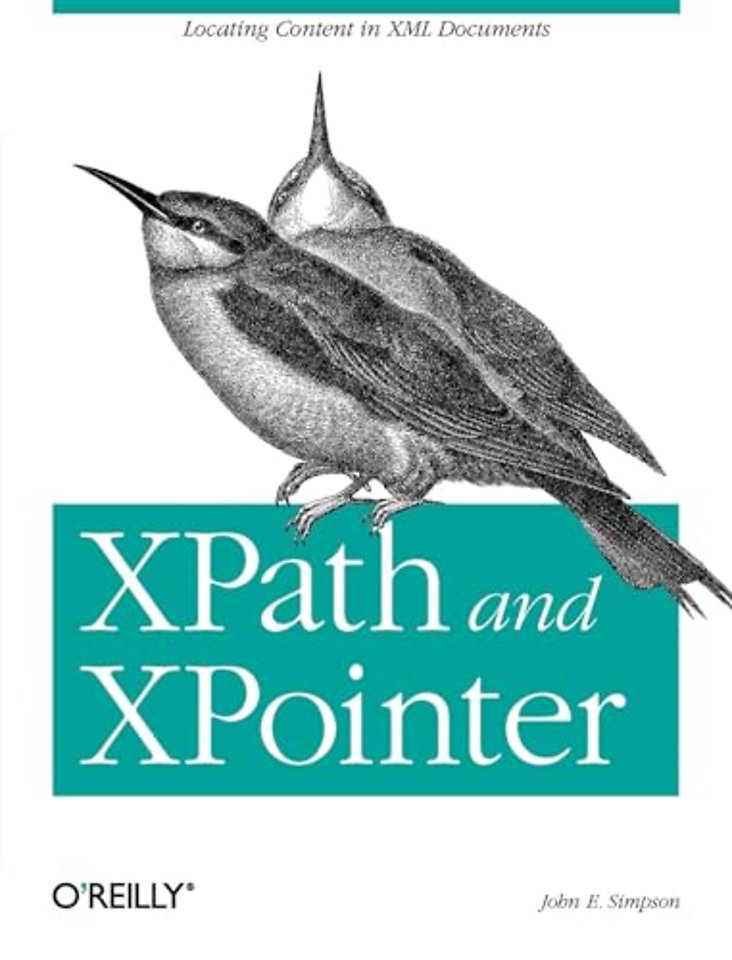XPath and Xpointer
Locating Content in XML Documents
Samenvatting
Referring to specific information inside an XML document is a little like finding a needle in a haystack: how do you differentiate the information you need from everything else? XPath and XPointer are two closely related languages that play a key role in XML processing by allowing developers to find these needles and manipulate embedded information. XPath describes a route for finding specific items by defining a path through the hierarchy of an XML document, abstracting only the information that's relevant for identifying the data. XPointer extends XPath to identify more complex parts of documents. The two technologies are critical for developers seeking needles in haystacks in various types of processing.
'XPath and Xpointer' fills an essential need for XML developers by focusing directly on a critical topic that has been covered only briefly. Written by John Simpson, an author with considerable XML experience, the book offers practical knowledge of the two languages that underpin XML, XSLT and XLink. XPath and XPointer cuts through basic theory and provides real-world examples that you can use right away.
Written for XML and XSLT developers and anyone else who needs to address information in XML documents, the book assumes a working knowledge of XML and XSLT. It begins with an introduction to XPath basics. You'll learn about location steps and paths, XPath functions and numeric operators. Once you've covered XPath in depth, you'll move on to XPointer- its background, syntax, and forms of addressing. By the time you've finished the book, you'll know how to construct a full XPointer (one that uses an XPath location path to address document content) and completely understand both the XPath and XPointer features it uses.
XPath and XPointer contains material on the forthcoming XPath 2.0 spec and EXSLT extensions, as well as versions 1.0 of both XPath and XPointer. A succinct but thorough hands-on guide, no other book on the market provides comprehensive information on these two key XML technologies in one place.
Specificaties
Inhoudsopgave
1. Introducing XPath and XPointer
Why XPath and XPointer?
Antecedents/History
XPath, XPointer, and Other XML-Related Specs
XPath and XPointer Versus XQuery
2. XPath Basics
The Node Tree: An Introduction
XPath Expressions
XPath Data Types
Nodes and Node-Sets
Node-Set Context
String-Values
3. Location Steps and Paths
XPath Expressions
Location Paths
Location Steps
Compound Location Paths Revisited
4. XPath Functions and Numeric Operators
Introduction to Functions
XPath Function Types
XPath Numeric Operators
5. XPath in Action
XPath Visualiser: Some Background
Sample XML Document
General to Specific, Common to Far-Out
6. XPath 2.0
General Goals
Specific Requirements
7. XPointer Background
XPointer and Media types
Some Definitions
The Framework
Error Types
Encoding and Escaping Characters in XPointer
8. XPointer Syntax
Shorthand Pointers
Scheme-Based XPointer Syntax
Using XPointers in a URI
9. XPointer Beyond XPath
Why Extend XPath?
Points and Ranges
XPointer Extensions to Document Order
XPointer Functions
A. Extension Functions for XPath in XSLT
Index
Anderen die dit boek kochten, kochten ook
Net verschenen
Rubrieken
- aanbestedingsrecht
- aansprakelijkheids- en verzekeringsrecht
- accountancy
- algemeen juridisch
- arbeidsrecht
- bank- en effectenrecht
- bestuursrecht
- bouwrecht
- burgerlijk recht en procesrecht
- europees-internationaal recht
- fiscaal recht
- gezondheidsrecht
- insolventierecht
- intellectuele eigendom en ict-recht
- management
- mens en maatschappij
- milieu- en omgevingsrecht
- notarieel recht
- ondernemingsrecht
- pensioenrecht
- personen- en familierecht
- sociale zekerheidsrecht
- staatsrecht
- strafrecht en criminologie
- vastgoed- en huurrecht
- vreemdelingenrecht







